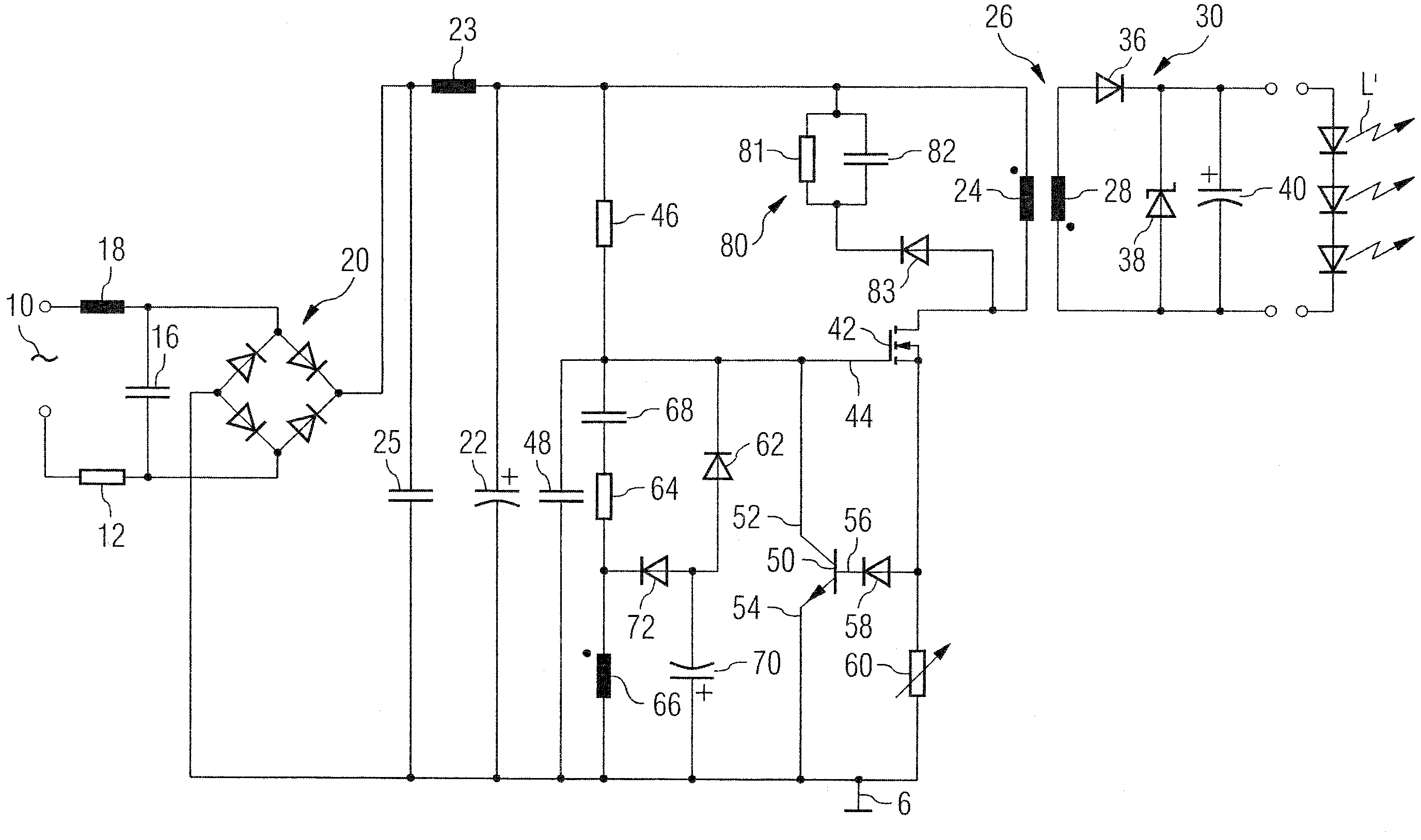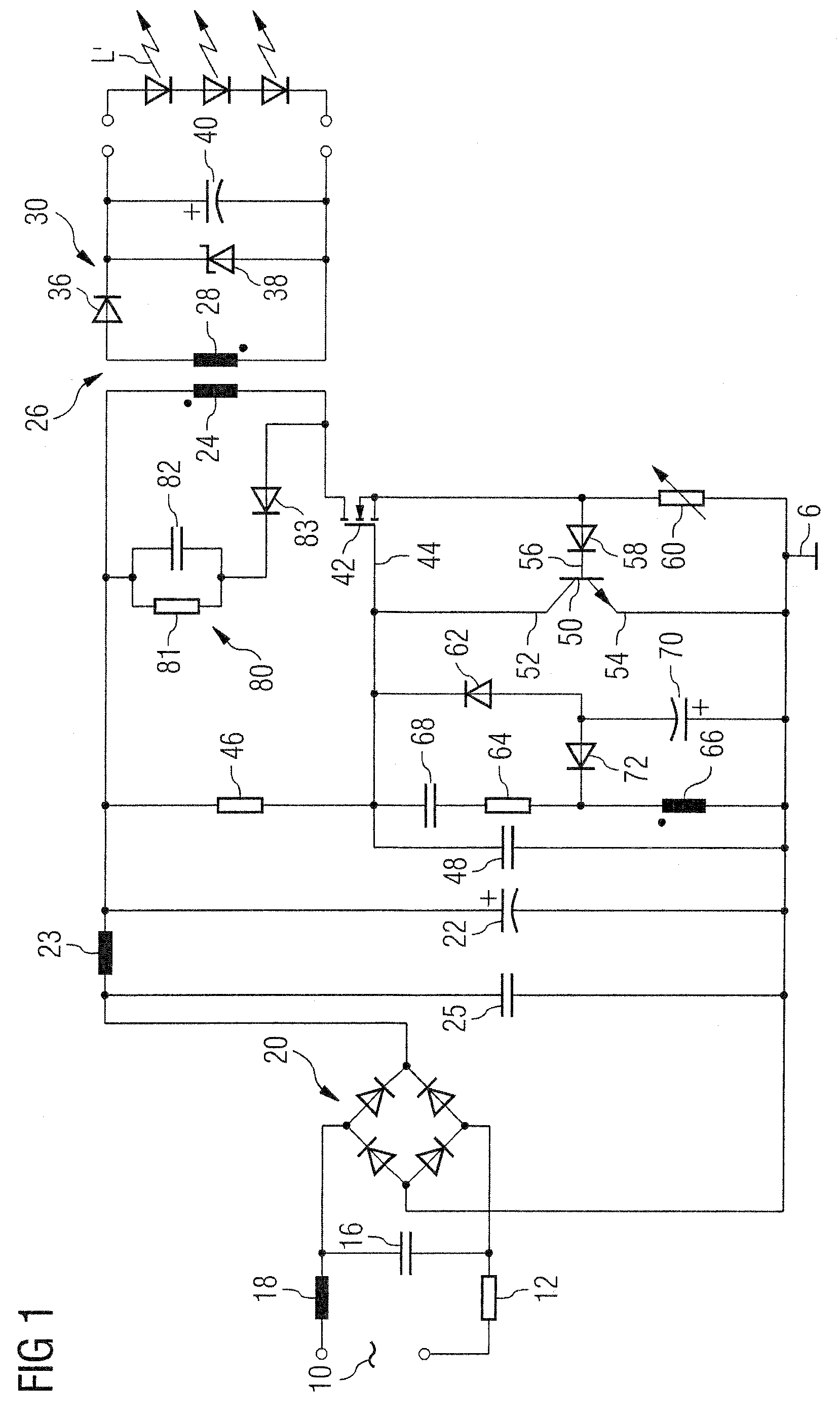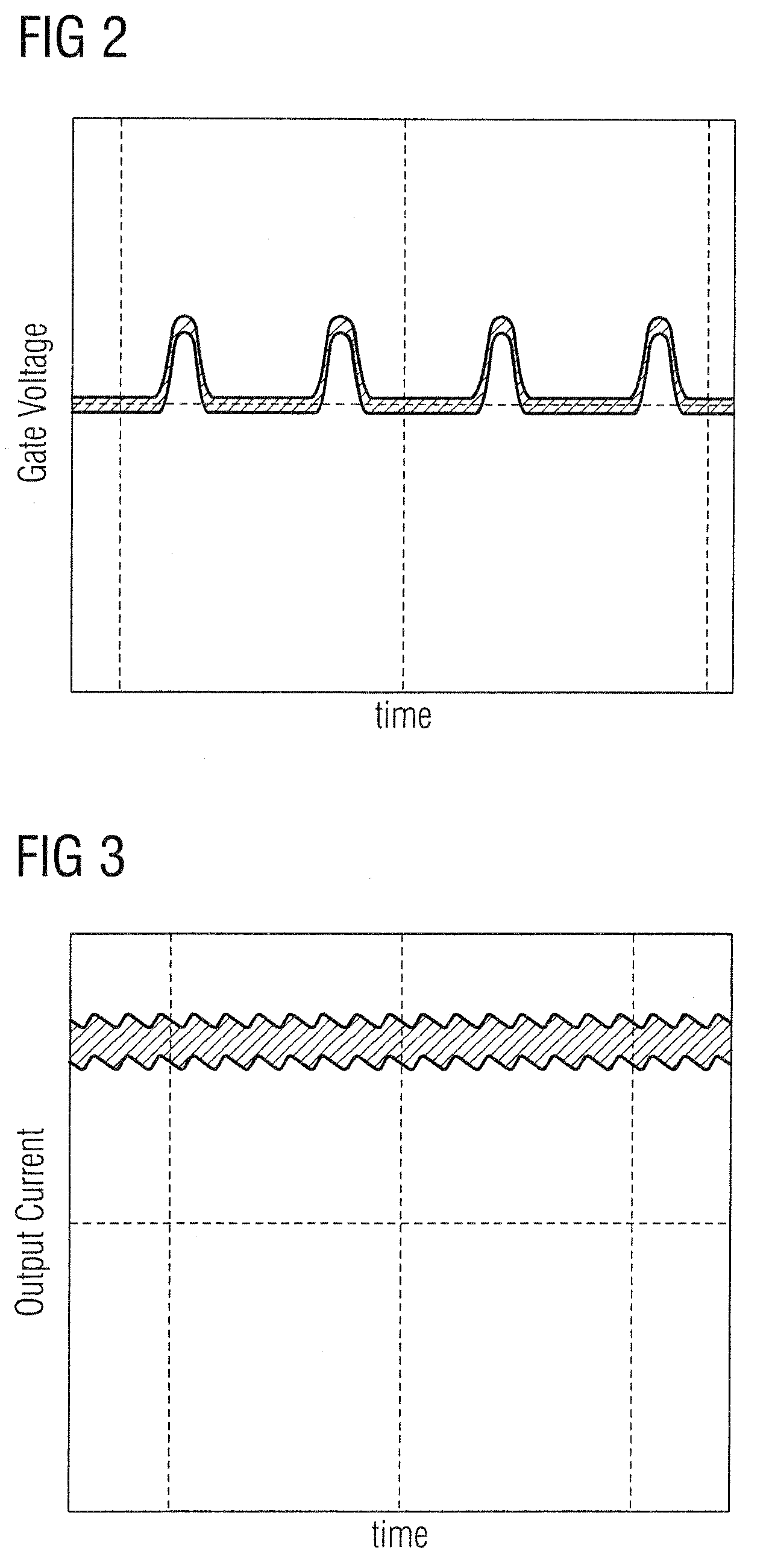Driver arrangement for LED lamps
a technology of led lamps and drivers, applied in the direction of electric variable regulation, process and machine control, instruments, etc., can solve the problems of inability to provide a consistent safety insulating barrier, prior art solutions do not lend themselves to dimming functions,
- Summary
- Abstract
- Description
- Claims
- Application Information
AI Technical Summary
Benefits of technology
Problems solved by technology
Method used
Image
Examples
Embodiment Construction
[0017]The circuit diagram of FIG. 1 is representative of a driver circuit for use in feeding one or more LED lighting sources L from a mains input voltage applied between two input terminals 10.
[0018]The mains input voltage applied across the terminal 10 goes first through an Electro-Magnetic Interference (EMI) filter. This is typically comprised e.g. of a resistor 12 having cascaded thereto a low-pass LC filter comprised of a capacitor 16 and an inductor 18. The filtered input voltage is then fed to a bridge rectifier 20 to produce a rectified voltage which, after filtering via a LC network comprised of an inductor 23 and a capacitor 25, is made available across a capacitor 22, preferably comprised of an electrolytic capacitor.
[0019]The voltage across the capacitor 22 forms a so-called “DC bus voltage” (referred to ground G) which is subject to controlled switching as better detailed in the following in order to feed the primary winding 24 of a voltage step-down transformer 26. The...
PUM
 Login to View More
Login to View More Abstract
Description
Claims
Application Information
 Login to View More
Login to View More - R&D
- Intellectual Property
- Life Sciences
- Materials
- Tech Scout
- Unparalleled Data Quality
- Higher Quality Content
- 60% Fewer Hallucinations
Browse by: Latest US Patents, China's latest patents, Technical Efficacy Thesaurus, Application Domain, Technology Topic, Popular Technical Reports.
© 2025 PatSnap. All rights reserved.Legal|Privacy policy|Modern Slavery Act Transparency Statement|Sitemap|About US| Contact US: help@patsnap.com



